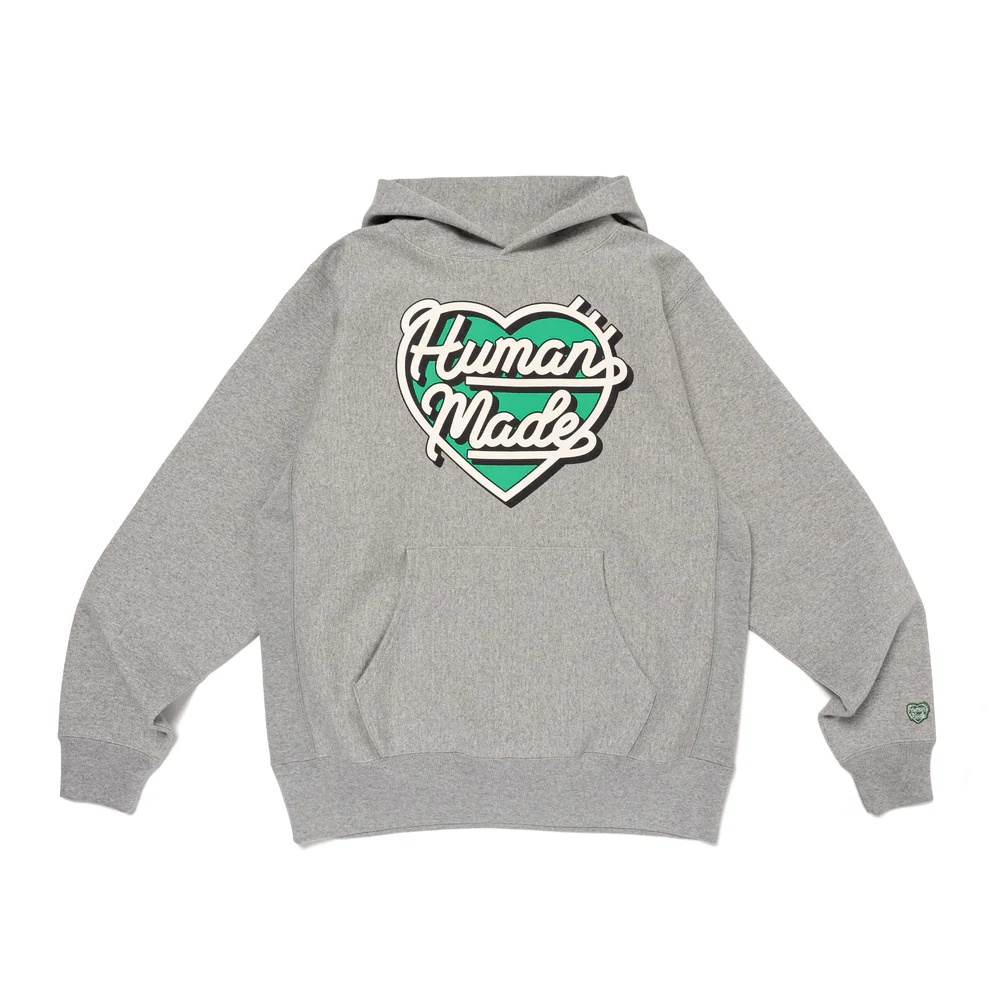Global Influence, Japanese Soul: The Rise of Human Made Hoodies

Streetwear has always been more than just clothing. It is a movement—a language spoken by generations who see fashion not just as a trend but as a lifestyle. Among the many brands that have risen through the noise, Human Made has carved out a place that is both niche and revered. Founded by Japanese cultural icon NIGO®, the brand merges the finesse of Japanese craftsmanship with a vision for global appeal. At the center of this movement lies the Human Made hoodie, a garment that has captured the imagination of streetwear enthusiasts across the globe. It is not merely an article of clothing; it is a statement of values, culture, and artistry.
The Origins: NIGO® and His Legacy
NIGO® is no stranger to streetwear. Long before launching human made clothing, he created A Bathing Ape (BAPE), a brand that became synonymous with bold graphics and hip-hop influence in the 2000s. But Human Made marked a departure from that aesthetic. Instead of flash and flamboyance, it was rooted in subtlety, minimalism, and heritage. The Human Made hoodie reflects this pivot. It is not designed to shout—it is designed to whisper. Through thoughtful design and premium materials, it pays tribute to Japan’s legacy of precision and quality, while also catering to a global audience hungry for authenticity.
Japanese Craftsmanship in Every Stitch
Unlike many mass-produced garments that rely on speed and scale, Human Made takes a slower, more deliberate approach. Each hoodie is crafted using vintage loopwheel knitting machines—a technique that is not only rare but also time-consuming. These machines, preserved and maintained in Japan, produce fabric that is softer, denser, and more durable than most alternatives available today. The result is a hoodie that feels different from the moment you touch it. There’s a weight to it—not just physically, but symbolically. Every stitch speaks of care, tradition, and an almost obsessive attention to detail. This isn’t just clothing; it’s wearable craftsmanship.
Design Philosophy: Nostalgia Meets Modern Utility
The Human Made hoodie doesn’t chase seasonal trends. Instead, it relies on timeless appeal. Inspired by vintage Americana and mid-century workwear, the designs exude nostalgia while remaining entirely modern in their fit and function. The silhouettes are often boxy, mirroring classic US sweatshirts from the 1950s, but refined with a Japanese eye for balance and proportion. There is a utilitarian beauty in each design. Drawstrings are made to last. Ribbing at the cuffs and waist ensures form retention. Even the interior fleece softens over time, offering the kind of comfort that fast fashion can’t replicate. The hoodie evolves with the wearer, becoming more personal and meaningful the longer it is used.
Global Popularity: From Tokyo to Los Angeles and Beyond
While Human Made hoodies are steeped in Japanese tradition, their influence is unmistakably global. Fashion influencers, streetwear aficionados, and cultural icons from all corners of the world have embraced the brand. Celebrities like Pharrell Williams—who is also a close collaborator with NIGO®—frequently don Human Made apparel. Music artists, professional skaters, and designers all resonate with the hoodie’s balance of culture and construction. But it’s not just high-profile endorsements that fuel the brand’s growth. Everyday wearers across New York, London, Seoul, and Berlin are drawn to the hoodie because it represents something rare in modern fashion: a brand that doesn’t compromise its roots for reach.
The Meaning Behind the Symbols
One of the standout elements of the Human Made hoodie is its understated yet impactful branding. Unlike typical streetwear, which often relies on bold logos and oversized prints, Human Made adopts a more subdued approach. The iconic heart logo, sometimes accompanied by the slogan “Gears for Futuristic Teenagers”, adds a philosophical touch to each piece. This phrase, quirky yet profound, reflects NIGO®’s vision of creating timeless clothing for youthful spirits—regardless of their age. It’s this blend of whimsy and depth that sets the hoodie apart. It doesn’t just look good—it tells a story, subtly encouraging introspection and individuality.
Endurance Over Excess: The Anti-Fast-Fashion Ethos
In a world where fashion is often consumed rapidly and discarded just as fast, the Human Made hoodie stands as a quiet protest. It is made to endure. Its quality allows it to be worn regularly without showing signs of wear. Over time, it molds to the body, telling a narrative of lived experiences. There is no urgency to replace it next season because it was never meant to be temporary. This slow-fashion mindset is a defining characteristic of Human Made. It challenges consumers to buy better, not more. The hoodie becomes an heirloom piece—something that can be worn for years without losing its appeal or integrity.
Bridging Cultures Through Fabric
What makes Human Made hoodies so universally appealing is their ability to transcend cultural boundaries. The product is undeniably Japanese in its precision and heritage, yet global in its sensibility. It harmonizes East and West, past and future. This cultural duality is what draws people in. For Japanese consumers, it’s a modern expression of national pride. For international fans, it’s a portal into the thoughtful craftsmanship that defines Japanese artistry. In either case, wearing the hoodie becomes an act of cultural appreciation. It’s more than fashion—it’s a conversation between traditions, eras, and geographies.
Sustainability as a Byproduct of Quality
While many fashion brands loudly market their sustainability efforts, Human Made lets its product speak for itself. The hoodie, by virtue of its durability, naturally supports sustainable fashion practices. When clothing lasts longer, fewer resources are needed to replace it. The brand doesn’t need gimmicks or greenwashing. Its commitment to quality inherently reduces waste. Moreover, the use of traditional loopwheel machines limits energy consumption, as these machines are manually operated and slower than industrial alternatives. The brand’s low production volume also reduces excess inventory, minimizing the environmental footprint. In a sense, sustainability is woven into the very fabric of the hoodie.
Fashion That Fits Every Season
Another reason for the hoodie’s enduring popularity is its versatility. It functions across seasons, climates, and contexts. In colder months, it serves as an insulating layer under a jacket. During spring or autumn, it becomes a stand-alone outerwear piece. Even in summer, when nights get cooler, it’s the ideal companion. The fabric breathes with the body, maintaining comfort across temperatures. Its minimalist design ensures it fits into almost any wardrobe, whether styled with tailored trousers or distressed denim. This multi-functionality means the hoodie doesn’t just sit in the closet—it becomes a go-to staple.
A Community Woven Through Threads
Beyond the product itself, Human Made has cultivated a global community. Fans of the hoodie often share their styling ideas, care tips, and personal stories across social media. This organic community, built on shared appreciation rather than artificial hype, gives the brand a soul. There is a quiet pride in owning a Human Made hoodie, not because it’s expensive or rare, but because it represents a set of values—thoughtfulness, quality, and cultural respect. In a world where brands often seek virality, Human Made seeks meaning. It’s this grounded authenticity that keeps its followers loyal and ever-growing.
The Future of Human-Made Hoodies
As Human Made continues to expand globally, the hoodie remains central to its identity. The brand may collaborate with international designers, introduce new colors, or experiment with subtle innovations, but the core will remain unchanged. The hoodie will always reflect the brand’s DNA: Japanese roots, global resonance, and a steadfast commitment to quality. It is built not just to be worn but to be remembered. And as more people reject the disposability of fast fashion in favor of substance and storytelling, the Human Made hoodie is poised to become even more influential in the years to come.
Blinding Lights and Branded Nights: The Weeknd Merch Culture
The Weeknd is not merely a musician; he is a storyteller who crafts immersive worlds through sound, imagery, and fashion. As his discography evolved from moody mixtapes to global chart-dominating albums, his visual identity transformed in tandem. This evolution has been solidified not only through his performances and videos but also through the fashion he embodies and the merchandise he releases. The Weeknd’s merch has become more than clothing—it’s a cultural symbol that fuses the emotional landscapes of his music with tangible, wearable expressions. The rise of The Weeknd merch culture is a reflection of a deeper phenomenon: a movement where fashion becomes an extension of fandom, identity, and shared narrative.
The Birth of XO: An Identity Rooted in Mystery
Long before stadium tours and Super Bowl halftime shows, The Weeknd emerged in 2011 as an enigmatic voice on the internet. His debut mixtapes—House of Balloons, Thursday, and Echoes of Silence—arrived without a face, creating a mystique that drew listeners into a dark, emotional world. From the very beginning, this elusive persona became the foundation of the XO brand. The minimalist aesthetic—black and white visuals, shadowed figures, and haunting iconography—bled into early merch that fans would soon covet.
The first wave of XO merchandise wasn’t widely distributed or heavily promoted. It included understated pieces—mostly black hoodies and tees—featuring the now-iconic XO logo. These early designs weren’t about making a fashion statement; they were about belonging to a secret, emotional club. Fans who wore this merch were aligning themselves with a sound and a feeling: melancholy, sensuality, and rebellion. It was a way to be part of something intimate and underground, long before The Weeknd became a mainstream figure.
From Kiss Land to Cult Symbolism
In 2013, the weeknd merch released Kiss Land, an album that continued his exploration of isolation, fame, and pleasure. This project saw a more refined visual direction, inspired heavily by Japanese aesthetics and dystopian narratives. The merch took on a more symbolic, graphic-heavy tone. Fans noticed the introduction of stylized typography, anime-inspired art, and vivid color schemes. The collection’s visuals became more than logos—they started to represent fictional landscapes, emotions, and ideologies.
During this era, merch was primarily sold at shows or via limited online drops, maintaining a sense of rarity and exclusivity. Fans who managed to secure a piece of Kiss Land-era clothing weren’t just wearing merch—they were collecting fragments of a visual and sonic story. The line between music merchandise and an independent fashion label was beginning to blur. The XO brand started taking on a life of its own, with each new release adding layers of meaning and symbolism.
Conclusion: A Symbol of Quiet Confidence
The rise of Human Made hoodies is not about aggressive marketing or loud design. It’s about integrity. In every thread, there is a respect for craft. In every design, there is a narrative. And in every hoodie, there is a fusion of Japanese soul and global influence. It doesn’t beg for attention—it earns admiration. For those who understand that true style comes from authenticity, not logos, the Human Made hoodie is not just clothing. It is a symbol. A reminder that in a world chasing the next big thing, the most powerful statements are often made quietly and crafted to last.



